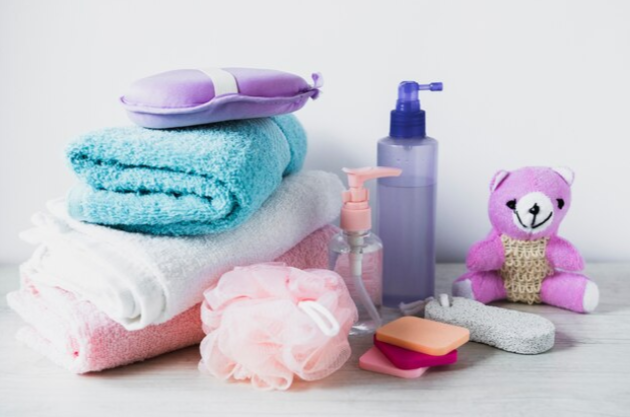Ensure child safety at home with our comprehensive childproofing checklist. Protect your little ones from potential hazards. Get started today!
Overview
A crucial step in ensuring the security and welfare of your children is to childproof your house. It entails modifying your living area to reduce threats and provide a haven for intrepid young explorers. This strategy involves reevaluating your home from a child’s point of view and goes beyond simply installing safety devices. Childproofing involves every area of your house, from putting dangerous materials out of reach to fastening large furniture to prevent toppling. For parents and caregivers, this extensive article is a priceless resource. It carefully describes the most critical tasks and offers a comprehensive childproofing checklist, guaranteeing that every kitchen and bedroom room is carefully inspected and adjusted. Adopting this proactive strategy helps prevent accidents and gives you peace of mind because you’ve made your home safer for your kids to explore and develop.
The Need to Childproof

Children investigate their surroundings as they grow because of their growing mobility and interest. Although this exploration is essential to their development, it may unintentionally put them in danger within the house. Commonplace items and areas could be dangerous for young children’s naive and curious minds. Therefore, one of the most critical steps in reducing these threats is childproofing. Parents and other caregivers can drastically lower the risk of accidents and injuries by adjusting the home environment to a developing child’s changing requirements. Childproofing successfully produces a safe environment where kids can develop and learn while exploring their surroundings without worrying about the risks that unmodified spaces might pose.
Childproofing Checklist
All Around House Safety
- Secure Furniture and TVs: To increase safety, TVs and heavy furniture must be firmly anchored to the wall. This preventive measure dramatically decreases the likelihood of tipping incidents, giving kids a safe space to explore without concern.
- Window Guards: Installing window guards or stops is vital to keep kids from falling out of windows, especially in homes with small children. These safety measures are excellent because they create a wall that stops kids from opening windows and running into things that could be dangerous.
- Smoke and carbon monoxide detectors: Safety gear must be set up correctly and work. Smoke and carbon monoxide detectors are essential safety measures that protect your house and family from possible dangers with regular maintenance and checkups.
- Cord Safety: Keep curtain and blind cords out of a child’s reach to avoid strangulation hazards. This little safety measure gives your children a safe and secure home.
- Secure Rugs: Underneath rugs, use non-slip pads to prevent falls and slides. This simple safety precaution lowers the possibility of mishaps in your house, particularly in areas that kids frequent, by keeping carpets firmly in place.
Kitchen Safety
- Lock Cabinets and Drawers: Put safety locks on kitchen cabinets and drawers to keep kids away from things that could be dangerous.
- Stove Guards: Use stove guards and knob covers to keep yourself from getting burned.
- Keep dangerous things out of reach: Store medicines, cleaning tools, and sharp things in high cabinets.
- Safeguard the fridge: Use device locks to keep kids from opening the refrigerator.
Safety in the bathroom
- Toilet Locks: To keep people from drowning, use toilet seat locks.
- Non-Slip Mats: Put non-slip mats in the shower and bathroom floor.
- Medicine Cabinet: Keep medicines and items out of reach or locked away.
- Set Water Heater Temperature: Turn down the heat to avoid getting too hot.
Safety in the Bedroom
- Crib Safety: Avoid soft bedding and ensure the crib complies with current safety regulations.
- Nightlights: Use nightlights to improve visibility and reduce the risk of accidents at night.
- Window Blind Safety: To ensure window blind safety, choose cordless blinds or ensure no looped cords.
- Furniture Anchoring: Use furniture anchors, binding bookcases and dressers to the wall.
Living Room Safety
- Corner Guards: Should be used on sharp furniture edges in living rooms.
- Fasten Area Rugs: Fasten area rugs to avoid slips.
- Hide Electrical Cords: Use outlet covers and keep cords out of reach.
- Eliminate little Objects: Keep little objects out of reach that could choke someone.
Outdoor Safety
- Swimming Pools: They should have fences installed around them for outdoor safety.
- Playground Inspection: Check the outdoor play apparatuses regularly.
- Safe Yard Tool Storage: Keep chemicals and tools inside a closed garage or shed.
- Safe Play Area: Establish a marked, secure play space in the backyard.
Common Hazards to Look Out For
- Choking Hazards: Everyday things to watch out for include certain meals, small objects, and toys with small parts, which are all potential choke hazards.
- Hazards for Poisoning: Batteries, plants, pharmaceuticals, and household cleaners.
- Fall hazards: Include loose furniture, high windows, and unguarded staircases.
- Drowning Risks: Bathtubs, toilets, buckets, and pools are drowning hazards.
Suggestions for Continued Safety
- Frequent Exams: Check your house frequently for any new dangers.
- Stay Informed: Recall product recalls and safety advisories to stay informed.
- Supervision: Always keep an eye on small children, especially when they’re in high-risk situations.
- Teach Your Youngster: Educate kids about safety as they get older.
Suggested Childproofing Items

- Safety gates: For locations that are off-limits and staircases.
- Cabinet locks: To keep potentially harmful objects safe.
- Furniture straps: For securing bulky furnishings.
- Outlet covers: To shield people from electrical risks.
In Conclusion
Making your house childproof is a continuous process that evolves as your kid ages. This never-ending adjustment process guarantees that your house will always be a secure place for learning and discovery as your child grows. Fostering a safe environment requires constant attention to detail and adherence to a comprehensive childproofing checklist. With the comprehensive guidance provided in this article, parents and caregivers may confidently protect their homes. But it’s essential to remember that childproofing does not replace close monitoring, even though it dramatically reduces possible threats. Adjusting safety measures based on your child’s age and developmental stage is critical. Updating these protocols regularly guarantees that your child’s safety and well-being are supported in the house during every developmental stage, enhancing your protective presence and careful observation.
We hope you found this information helpful in creating a safer environment for your family. At GuardWell Safety, we understand that every home is unique, as are your child-proofing needs. That’s why we offer a Free Child-Proofing Consultation tailored to your requirements. Let our experts help you identify potential hazards and provide personalized solutions to make your home a secure haven for your little ones. Book your free consultation today and take the first step towards peace of mind.






